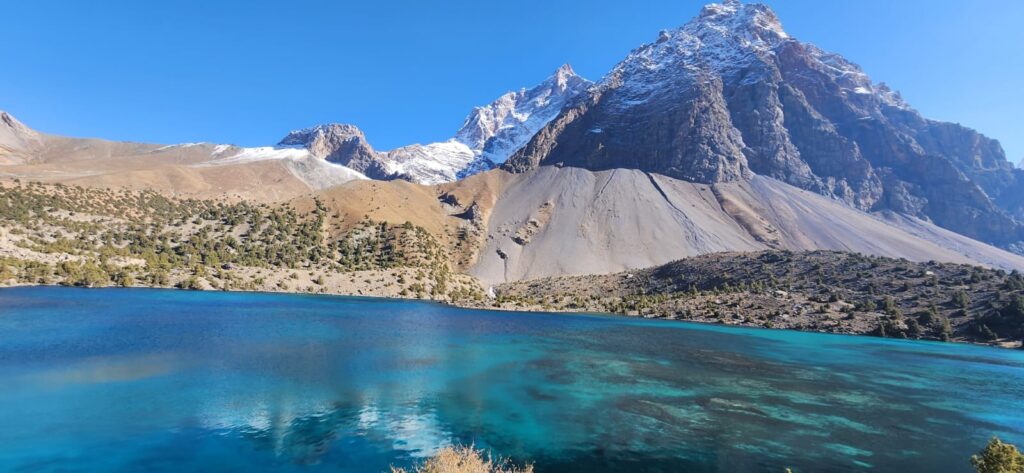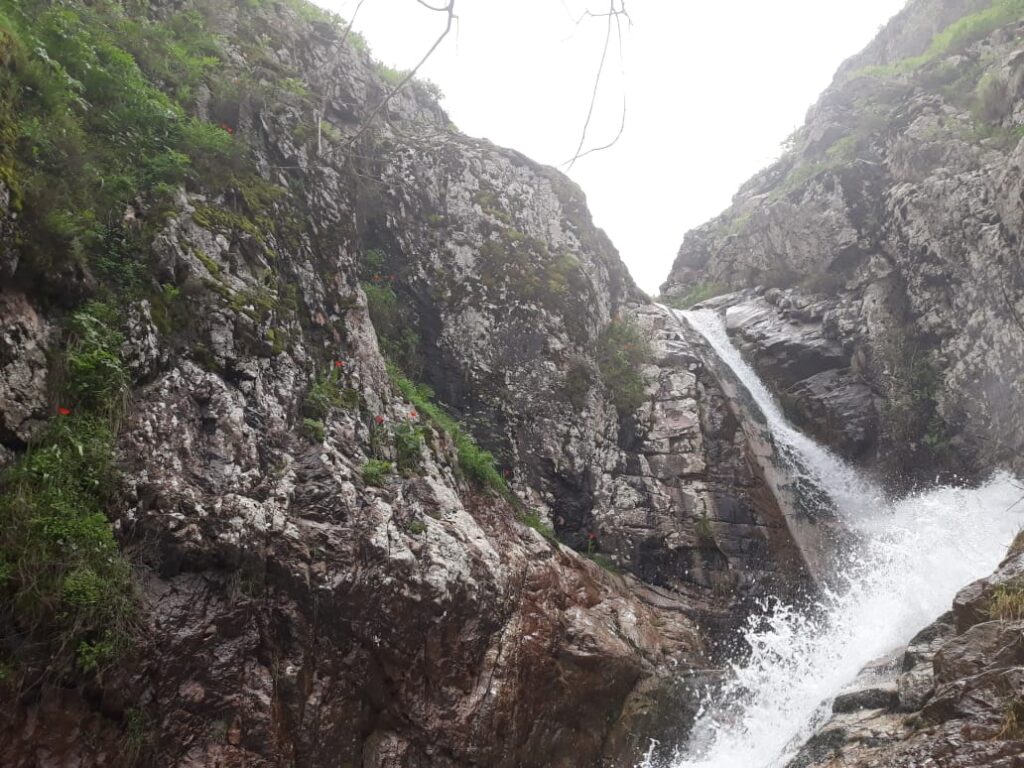In southern Tajikistan the air sometimes thickens into haze. It comes not from local chimneys or urban traffic but from the south, rising from deserts beyond the border. Dust storms lift across Afghanistan, Turkmenistan, and Uzbekistan, carried by wind into valleys of Khatlon and across the Amu Darya. These storms are transboundary events, reminders that air has no passport. To live here is to breathe geography carried on the wind.
Farmers in Kumsangir speak of days when the sky turns ochre, when sun is dimmed into a disk behind suspended soil. “It feels like the desert walks into our house,” one says. Dust coats crops, seeps through windows, settles on water channels. Livestock cough, people rub eyes raw. Children sometimes stay indoors, though houses cannot keep dust out. Storms become both weather and intruder.
These dust storms originate in dry basins far from Tajik villages. The Karakum and Kyzylkum deserts, the exposed Aral Sea bed, and degraded soils of northern Afghanistan all serve as source regions. Wind picks up fine particles, lofting them hundreds of kilometers. Researchers describe this as aeolian transport: particles under 100 microns lifted into atmospheric circulation, sometimes carried thousands of kilometers (Goudie & Middleton, 2001). In Central Asia, prevailing winds channel dust north to Kazakhstan, east toward the Tian Shan, and south into Tajik valleys. The storms that reach Khatlon often trace back to Afghanistan’s dry plains (UNEP, 2005).
Dust storms are transboundary geographies written in air. They show how land degradation in one country becomes respiratory illness in another, how irrigation collapse upstream becomes dust hazard downstream. In their clouds, the politics of water, soil, and borders blur into a single atmospheric body.
The collapse of the Aral Sea magnified this hazard. As water receded, seabed sediments laden with salts and pesticides gets to be exposed. Winds lift this toxic dust, dispersing it widely. In Tajikistan, traces of salt have been found on fields hundreds of kilometers from the Aral (Micklin, 2007). Farmers note a bitter taste on leaves after certain storms. The dust is not just soil but chemistry: residues of decades of irrigation and fertilizer use redistributed by air.
Medical workers in Qurghonteppa report increased respiratory problems during dust storm periods. Clinics see spikes in bronchitis, asthma, and eye infections. One doctor recalls, “After a big storm, our waiting room fills. Children, elderly, they come coughing, eyes red.” Health costs accumulate invisibly, one storm at a time. For those already vulnerable, dust is not inconvenience but risk.
Dust alters agriculture too. A thin layer on cotton leaves reduces photosynthesis. On orchards, dust dulls fruit skin, lowering market value. Irrigation canals silt up faster, requiring more cleaning. Farmers speak of doubled labor after storms involving washing leaves, clearing ditches. Dust is work.
Ecologically, dust can both degrade and fertilize. Deposited on glaciers, dark particles reduce albedo, accelerating melt (Takeuchi et al., 2001). On soils, deposition can add nutrients in small amounts but often delivers salts and toxins. The dual nature of dust complicates its role: both natural cycle and anthropogenic hazard. In Central Asia, the balance tips toward hazard, given the contamination of source soils.
Villagers narrate storms in memory. An elder recalls a storm in the 1980s when sky darkened at noon and dust fell thick as snow. “We thought the world was ending,” he says. Oral history preserves these events as markers of hardship. Children now grow up with dust as seasonal reality. They name winds, distinguish between light haze and choking storms. Knowledge of wind becomes cultural adaptation.
Remote sensing allows scientists to track storm origins. MODIS satellite imagery shows plumes rising from Aral seabed, from Afghan plains, streaking across Central Asia (Ginoux et al., 2012). Data confirm what villagers observe: storms come from elsewhere, but their impact is local. This makes governance difficult. Tajikistan cannot control soil degradation in Uzbekistan or Afghanistan, yet it bears costs. Dust is geography of shared vulnerability.
International organizations frame dust storms as part of desertification. UNEP and UNCCD reports note how overgrazing, poor irrigation, and deforestation expose soils to wind (UNEP, 2005). Each hectare of degraded land adds to storm potential. In this way, land use in one valley is atmospheric risk to another. The storms are cumulative outcomes of decades of policies, failures, and neglect.
To stand in a dust storm is to feel disorientation. Visibility drops to meters. Noise muffles. The body becomes coated, mouth gritty. Some describe it as drowning in soil. Afterward, the land wears a film, rooftops thick with dust, plants dulled. Geography has moved: what was once Afghan soil is now Tajik dust.
Adaptation is partial. Some households seal windows with cloth, plant windbreaks, keep water handy to settle air. But these are defenses, not solutions. Structural responses would require regional cooperation with restoring vegetation in source regions, stabilizing soils with shrubs, improving irrigation. Such efforts exist in small pilot projects but rarely scale. Political tension undermines environmental collaboration. Dust, in this sense, is political failure carried on wind.
In Dushanbe, dust sometimes drifts lightly, haze visible against mountains. But in Khatlon and border valleys, the storms are harsher. Farmers joke darkly that their fields are now “half Afghan,” covered in dust blown north. The humor masks fatigue. Each storm is both old and new, familiar yet still oppressive.
At dusk after a storm, the air slowly clears. Birds return, animals venture out. People sweep courtyards, wash faces, clean canals. Life resumes. Yet the residue lingers in lungs, in soils, in memory. The storm becomes part of place, another layer in Tajikistan’s geography.
References
- Goudie, A. S., & Middleton, N. J. (2001). Desert Dust in the Global System. Springer.
- Ginoux, P., Prospero, J. M., Gill, T. E., Hsu, N. C., & Zhao, M. (2012). Global-scale attribution of anthropogenic and natural dust sources and their emission rates based on MODIS Deep Blue aerosol products. Reviews of Geophysics, 50(3).
- Micklin, P. (2007). The Aral Sea disaster. Annual Review of Earth and Planetary Sciences, 35, 47–72.
- Takeuchi, N., Kohshima, S., & Seko, K. (2001). Structure, formation, and darkening process of albedo-reducing material (cryoconite) on a Himalayan glacier. Journal of Glaciology, 47(157), 693–703.
- UNEP. (2005). Central Asia: Environment Outlook.








